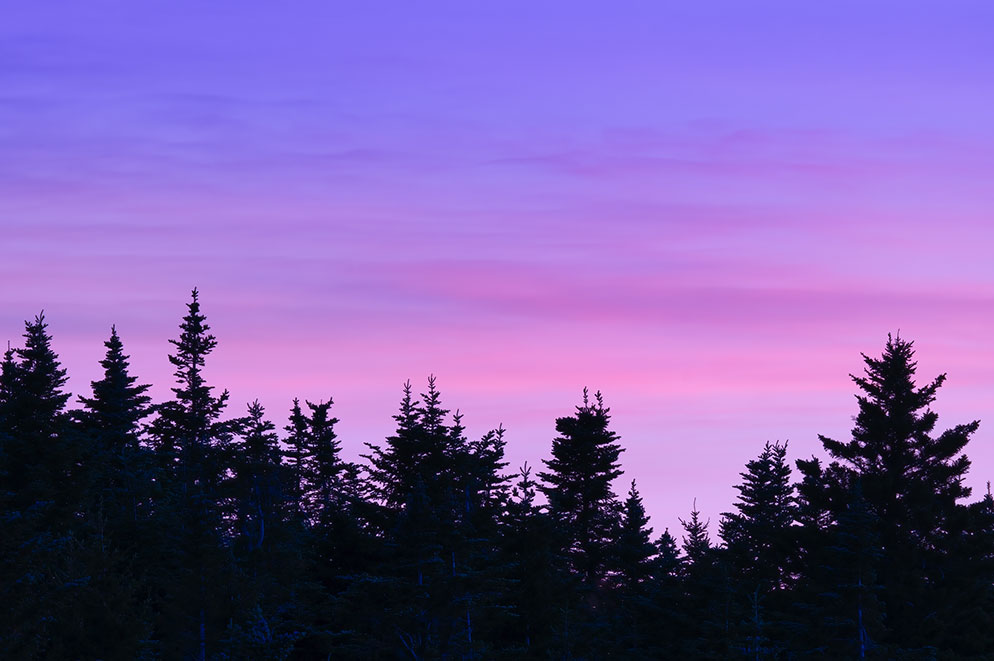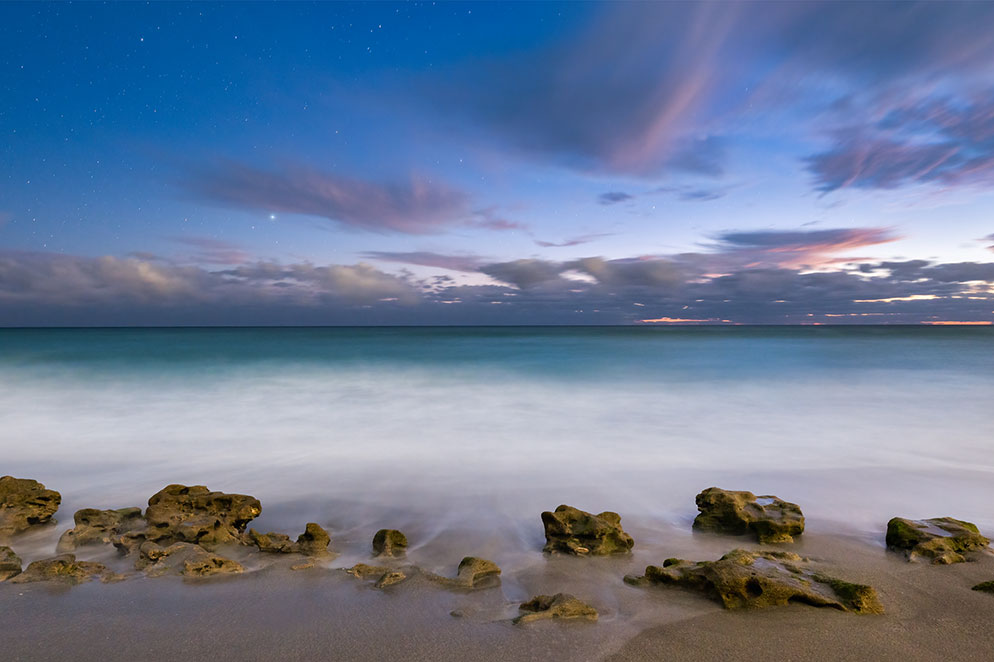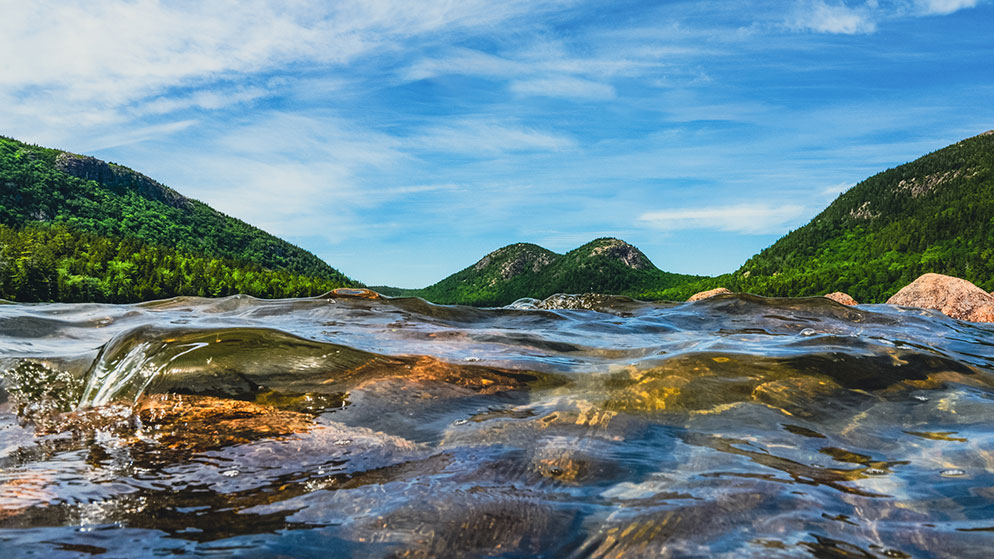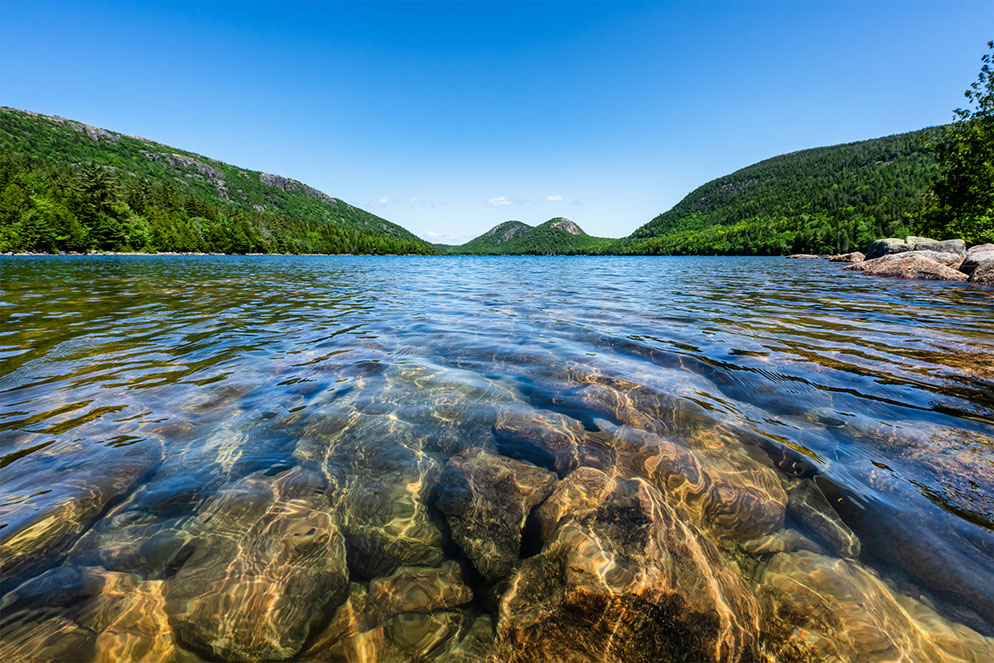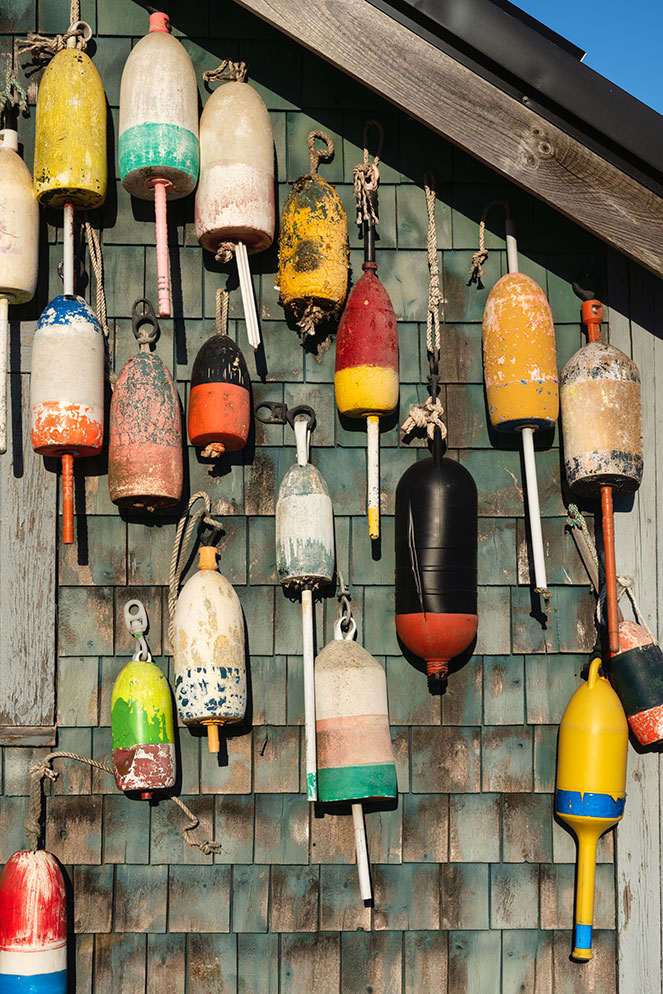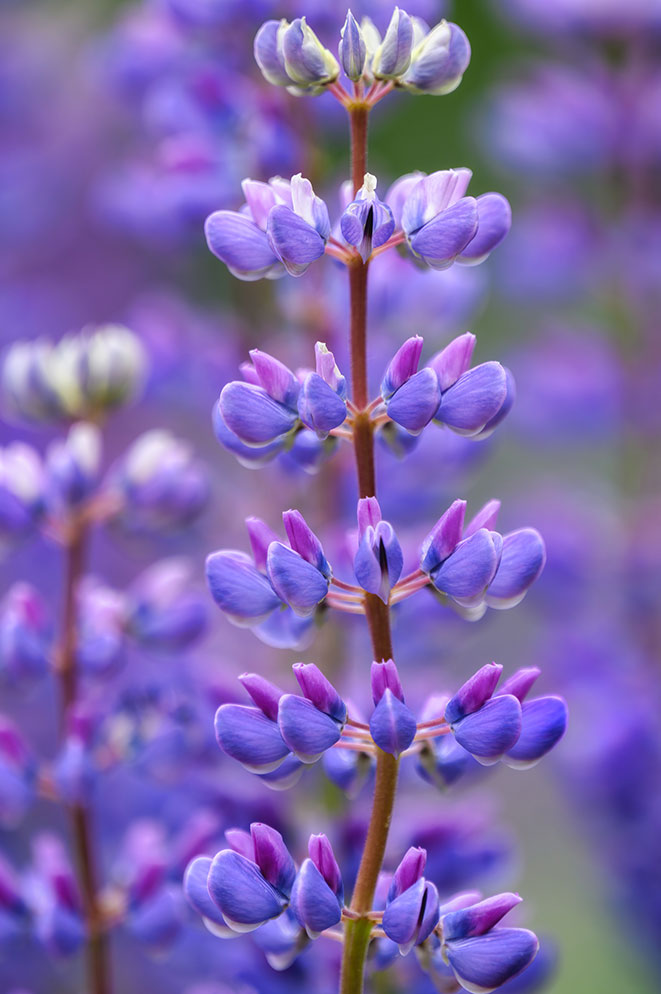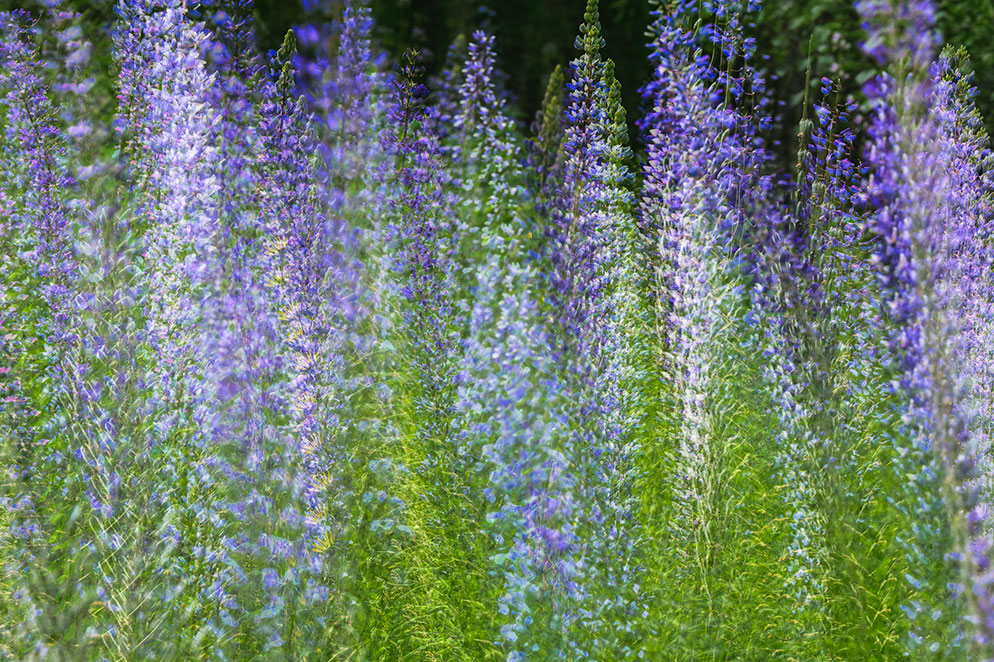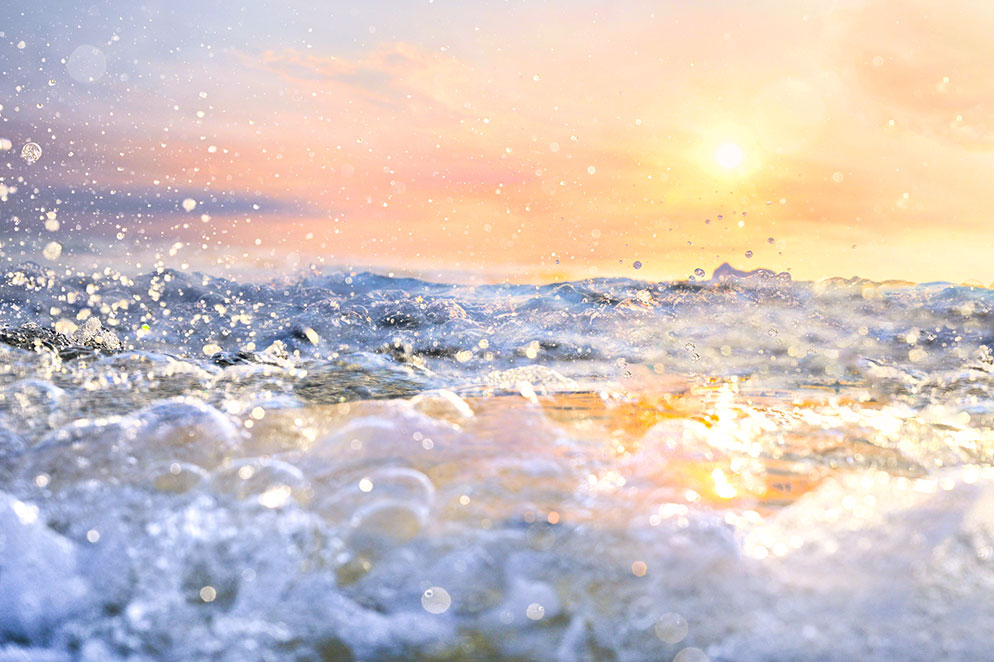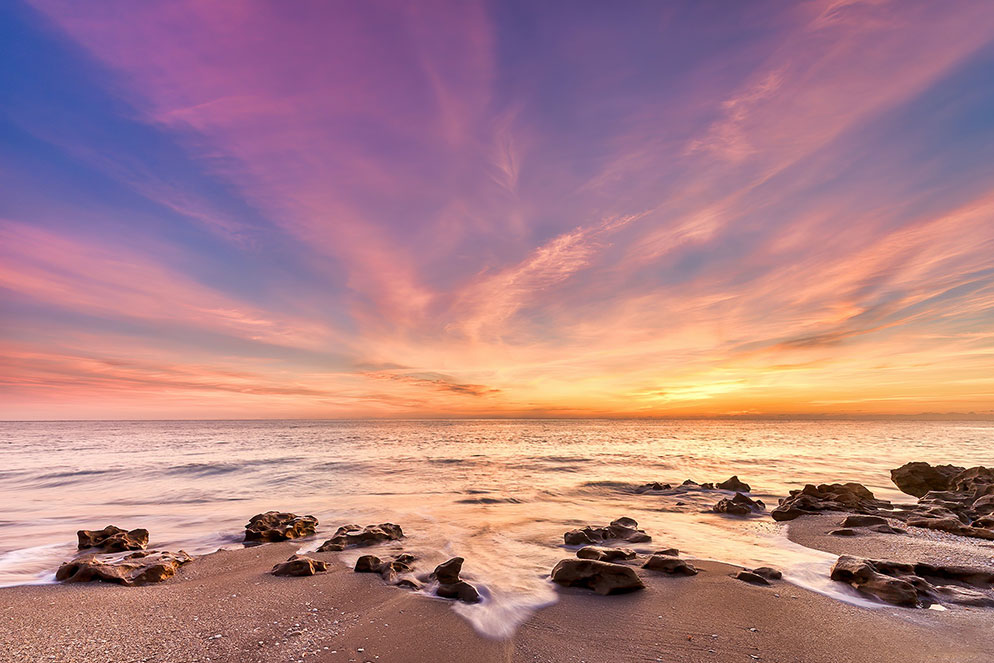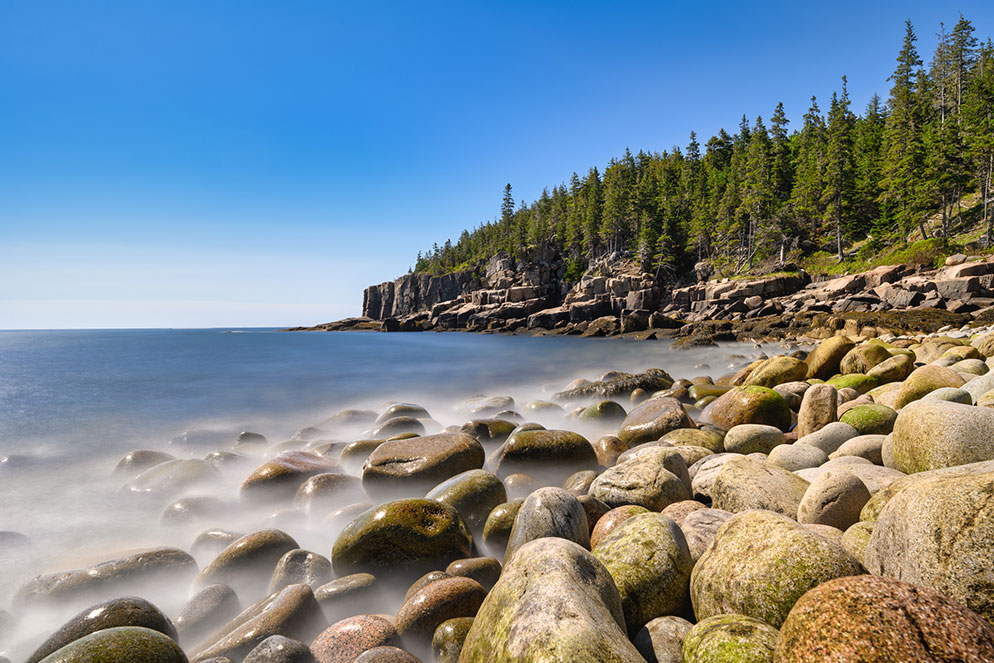Traveling Companions: A Trio of Essential Lenses
“The views from Cadillac Mountain in Acadia are so vast that it’s hard to isolate a particular part. I had the 2x converter on the 70-200mm lens—not a combination you’d expect, but the scene needed that kind of editing. Sometimes a landscape is too much information. I shot at sunset so the trees would be silhouettes and the sky would be the story.” Z 6II, NIKKOR Z 70-200mm f/2.8 VR S, Z Teleconverter TC-2.0x, 2/5 second, f/11, ISO 100, manual exposure, Matrix metering.
Say you’re planning to vacation in a place you’ve never been, and you’re looking to make some impressive images. Or, say you’re returning to a familiar place, and you want a different take on the tried-and-true.
We bring this up because we had the chance not long ago to explore these “what if” situations with Nikon Ambassador Deborah Sandidge, who was showing us some photos she made in both situations.
There were differences in her approach, but in both cases the common factors were lens choice, creative ideas and Deb’s awareness that technology aids creativity. The results were cool pictures and our story about how to get them no matter where you travel.
Let’s go.
Dawn stars at Coral Cove Park, Tequesta, Florida. “I got there in the dark and used a flashlight to scan the foreground I knew I’d include in the shot. The whiteness is wave action smoothed out during a long exposure. The 14-24mm caught all the vital real estate: sky, ocean waves and rocky shore detail.” Z 6, NIKKOR Z 14-24mm f/2.8 S, 30 seconds, f/5.6, ISO 1600, manual exposure, Matrix metering.
Q&A
The first thing we asked Deb was the kind of question we throw out to get things started with photographers who are wise to our belief that ultimately photography is really about thinking.
“Why do we take travel pictures, anyway?” we asked. “Why stick a camera between our eyes and what we’re seeing?”
Deb quickly cut to the basics: pictures are visual nudges to our memories; they are stories to share with others; they are hoped-for communication; they are attempts to get as close as possible to what it felt like to be there; and they are ways to have some fun with all these feelings, expectations and intentions.
Deb regularly travels to familiar and favorite locations in Florida, her home state, challenging herself to see them in different ways. But a trip to Acadia National Park in Maine was a first visit. “You can take I-95 all the way from Florida to Maine, but it’s an entirely different coastline, and the difference drew me in,” she says. “I was interested in the ruggedness and the vastness of that area, and I wanted to see what it was like and to experience it. I guess I wanted to see how I’d react to it.”
It was also, she says, something of a scouting trip. “I knew I’d want to go back in a different season to see what that was like, so part of this trip was exploratory—scout, shoot, have fun.”
Jordan Pond in Acadia. “I wanted you to feel you were going to get your feet wet, so I used the waterproof housing. Everybody seems to take the same picture of The Bubbles—the background mountains—but I wanted something different, and the 24-70 was ideal for that. The water was naturally smooth except for the splash on the left, and I love the translucency, seeing the rocks below.” Z 7II, NIKKOR Z 24-70mm f/2.8 S, 1/800 second, f/16, ISO 1000, aperture-priority exposure, Matrix metering.
Here Deb went for a wider view to include more of the area. “In this image the story is the sun and the reflections of the water on the rocks. By changing my location a bit and composing with a different idea, the photos essentially tell different stories, ones the lenses enabled me to tell.” Z 7II, NIKKOR Z 14-24mm f/2.8 S, 1/400 second, f/16, ISO 500, manual exposure, Matrix metering.
Whenever I travel, there are three lenses that will get me just about everything, from a landscape to homing in on a particular section or detail.
“Lobster buoys are colorful, graphic and of course typical of the area; the harbors are dotted with them. The 24-70mm is the ideal walking-around lens—you’re observing, taking visual notes, discovering mostly what you expect to discover, and also the occasional surprise.” Z 7II, NIKKOR Z 24-70mm f/2.8 S, 1/200 second, f/11, ISO 100, manual exposure, Matrix metering.
“This is one of my ‘true representation’ images of lupines, shot against a background of other lupines that lend their colors to make an interesting setting. The 70-200mm with the 2X teleconverter gave me a lot of compositional choices.” Z 6II, NIKKOR Z 70-200mm f/2.8 VR S, Z Teleconverter TC-2.0x, 1/320 second, f/5.6, ISO 500, manual exposure, Matrix metering.
Eyes of the Camera
She brought along two Z cameras and the essential trio of NIKKOR Z lenses: 14-24mm f/2.8, 24-70mm f/2.8, 70-200mm f/2.8. Plus, for extra reach, the Z Teleconverter TC-2.0x.
“Whenever I travel—to a Florida beach or on an overseas trip—those are the three lenses that will get me just about everything, from a landscape to homing in on a particular detail. And now, having those focal lengths in Z NIKKOR lenses—super sharp, advanced, lightweight and made for the Z system—makes it perfect. They’re versatile, workhorse lenses.”
“The real estate for lupines was just too much. I needed to pick an area, a section, and the 70-200mm allowed that, but I chose to also do a non-literal representation to capture the feeling of the groups of flowers. This is an eight-frame multiple exposure—it’s explained in the camera’s manual—and I moved the camera slowly up during the exposures to make it even more expressive.” Z 6II, NIKKOR Z 70-200mm f/2.8 VR S, 1/200 second, f/11, ISO 400, manual exposure, Matrix metering.
A quick, pragmatic guide to their general workhorse categories might go like this:
• The 14-24mm is the go-to glass when the subject is a vast landscape, seascape or cityscape; when the idea is to go for the overall effect of the big picture. You know, the “Oh, wow!” factor.
• The 24-70mm will pull in more detail, handle street photography and environmental portraits. It’s Deb’s perfect walking-around lens for exploring the town from marketplace to harbor. “The 24-70 will give you a bit of a wide-angle to a bit of a mid-range tele—and that’s a pretty versatile combination.”
• The 70-200mm ranges from portrait lens, with those classic focal lengths of 85 and 105, to versatile telephoto to get you visually closer to your subjects. Deb loves to use it to tame the territory by isolating and drawing attention to something within a scene she’s likely captured with the 14-24mm.
An image overlay of two shots—beach at sunrise, froth of waves—taken with the camera in a waterproof housing— “so I could get super low,” Deb says. “The 24-70mm allowed some isolation and direction of viewers’ attention. Image overlay is a second chance at creative composition.” Check your camera manual for image overlay details. Z 6II, NIKKOR Z 24-70mm f/2.8 S, 1/6400 second, f/6.3, ISO 2000, aperture priority, spot metering; second shot: f/11, 1/640 second, ISO 800.
“Sunrise at Coral Cove—same basic location, but a different day and just past dawn. Nothing but the 14-24mm will give me that stretch of clouds painted across the sky, but I also included some foreground because I liked how the cloud pattern echoed the angular shapes of the beach, the rocks and the water coming toward me.” Z 7, NIKKOR Z 14-24mm f/2.8 S, 1/2 second, f/11, ISO 64, manual exposure, Matrix metering.
Practical Value
For examples of how “technology aids creativity” and “photography is really about thinking” apply when you’re actually taking pictures, consider two of Deb’s photos.
“The Maine lupines were beautiful to look at,” she says, “but they were a clutter of color and form, so I played with that, using the 70-200mm for a multiple exposure that represented the entire field of flowers in a different way than a straight shot would have. Then the job was to isolate, and that same lens took control and delivered a clear view of one flower, with blurred-out background flowers that suggested the overall scene.”
Boulder Beach, Acadia National Park. “You go from wooden steps right onto huge boulders. I wanted the ocean in a long exposure that would smooth out the water so it would have an ethereal look to contrast the rocks. I included the rocky cliffs and the trees so you get a feel for this place, and why it’s worth getting down there.” Z 7II, NIKKOR Z 14-24mm f/2.8 S, 3 minutes, f/11, ISO 64, manual exposure, Matrix metering.
And then there’s Boulder Beach. “People will often get to a great location and go with their first impression and just start shooting,” Deb says. What she did was to take some time to think about how she was going to make the photo particularly expressive. “I needed to be at a low angle,” she says. “That was the key. The idea was to get close to the water with the camera as low as I could get it—the tripod was basically flat out, and I used the tilt-up LCD to compose from that level. It made all the difference—if I’m standing up, the rocks don’t have that dominance.”
Near the end of our talk Deb pretty much summed up her approach to her photography when she said, “Here’s what I see. Now, what do I want to get from what I see?”
We recognize a perfect story ending when we hear it.

